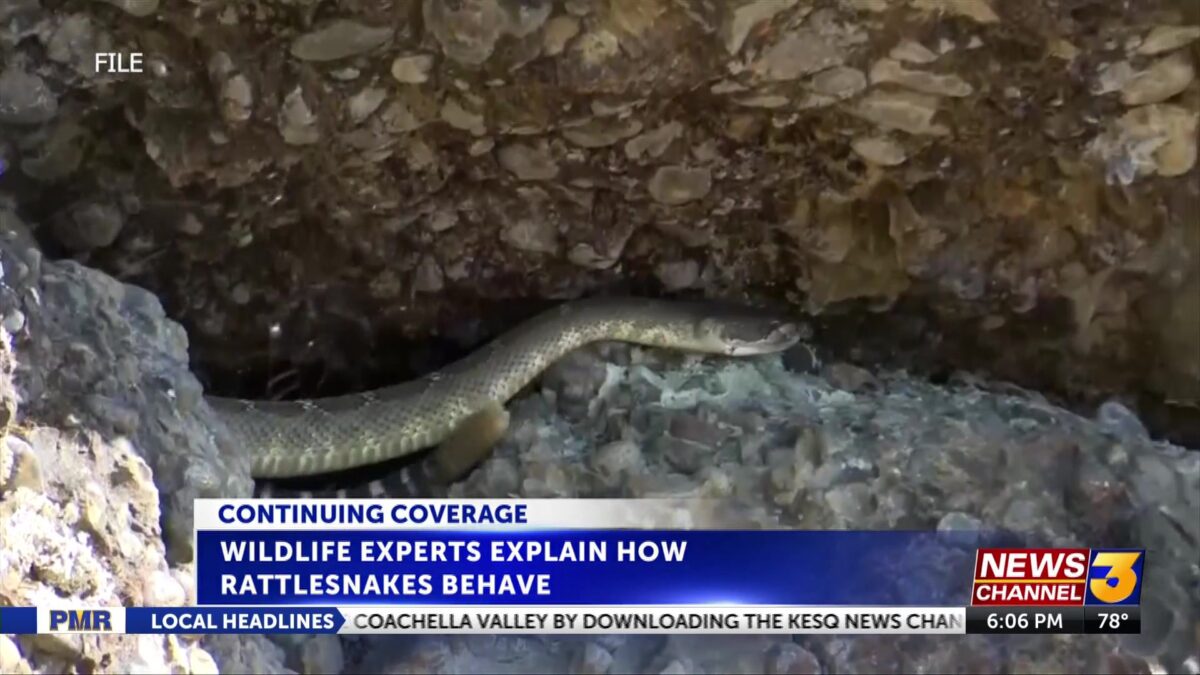After rattlesnake bite at elementary school, experts explain snake behavior

Gavin Nguyen
PALM DESERT, Calif. (KESQ) – A kindergartener remains hospitalized after being bit by a rattlesnake last Friday.
The bite, which happened at Gerald Ford Elementary School in Indian Wells, came from a Colorado Desert sidewinder. The snake is a venomous pit viper native to the Sonoran Colorado Desert, right here in Southern California.
Emily Taylor, a professor of biology at Cal Poly, explained that sidewinders rank relatively lower on the danger scale when it comes to rattlesnake species.
“All rattlesnake bites are medical emergencies, and all rattlesnake bites are very dangerous. Luckily, we have good treatment so that outcomes tend to be good, but you still don’t want to get bitten,” Taylor said. Given the circumstances, though – and the fact that the victim has had 44 doses of antivenom administered to her so far – Taylor emphasized that the severity of bites can often vary.
“The fact that she had to have 44 vials of antivenom suggest that it was actually a very serious envenomation. And so it really highlights how even though there are differences in severity on average between species, any given bite can be very severe or much weaker.”
The rattlesnake that bit the 5-year-old was a baby, but Taylor also pointed out that the evaluation that baby rattlers are more dangerous than adults because they cannot control the amount of venom they release is a myth.
Local security teams understand the risks these rattlesnakes present to residents of the Coachella Valley and regularly send their personnel to trainings on how to handle the reptiles.
That training has come in handy plenty of times throughout the summer, according to Mitch Spike, a local Director of Security for a gated community that runs right up to the desert wildland.
“Probably dozens of times, yeah,” Spike recounted. “Yeah, we get quite a few of them. They’re not all rattlers. They’re not all venomous, but, you know, most of them are.”
And in October, snake sightings are bound to be more common, according to experts. Taylor said rattlesnakes are “bimodal.”
In the winters and summers, rattlesnakes become less active. During the winter, the serpents tend to enter a hibernation-like state; meanwhile, in the summer, the intense heat in the desert keeps them from being active during the daytime.
But during the spring and autumn, rattlesnakes again become active.
In the aftermath of this recent snake bite, Taylor acknowledged, “I completely would understand why people would become fearful, even develop disgust or hatred based on this terrible experience this family has gone through.”
She continued, “But by and large, the more people can be respectful of wildlife, dangerous wildlife, including rattlesnakes, the less likely it is they’re going to have a negative interaction.”
She advised residents – especially those who live close to the edge of the desert-city interface (an area close to wild areas) – to clear their yards of debris or places where rattlesnakes could seek shelter. Rattlesnakes may also seek out wet areas to drink from, so they may gather in those areas. When gardening or walking through tall brush, you should also mind where you place your hands and feet.
And in the event you run into a rattlesnake, she pointed to a little-known resource: a website where you can find trained volunteers who will come to your home and humanely remove the snake from your property, releasing it back into the wild. The link to that site can be found here. (freesnakerelocation.com)